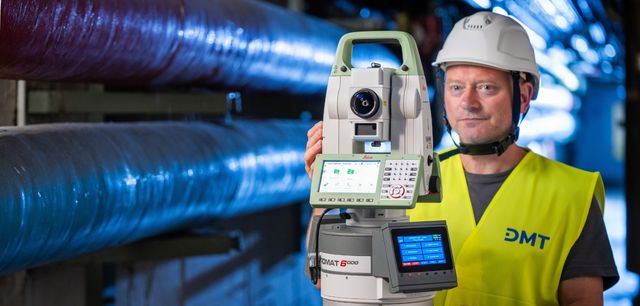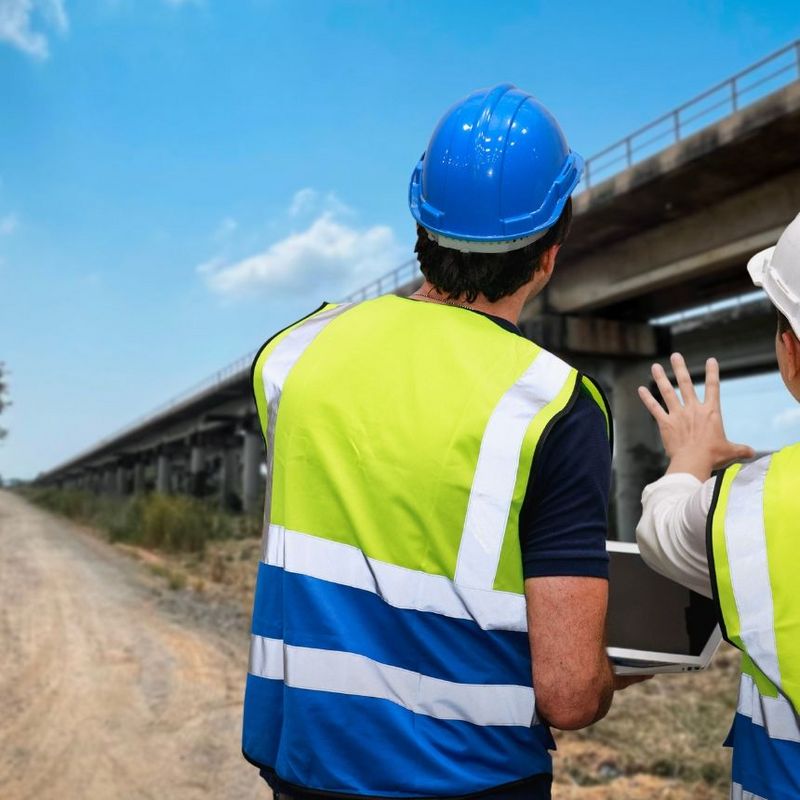19 September 2024
Digging kilometres-long tunnels into the earth requires the greatest accuracy. The Gyromat from DMT ensures that the huge drills meet as precisely as possible in the middle under the mountain massifs or below the seabed. The high-precision surveying gyro from the TÜV NORD GROUP subsidiary has previously set the direction for the Channel Tunnel and also provides orientation in shipbuilding and aviation.
It’s easy to lose your bearings underground, and not just because of the darkness that naturally prevails there. The more steel and iron is used in mine and other tunnels, the more a compass needle will get confused. A tunnel that is actually supposed to be dug to the north can easily head off in the wrong direction. This explains why, starting in the 1950s, experts from the Westphalian Mining Union Fund in Bochum set out to develop an alternative, high-precision measuring system based on the principle of the gyroscope that would not be knocked off course by iron and steel. This mining union fund has since become DMT – and its “Gyromat” the most accurate surveying gyroscope in the world.
If you ask Jörg Niese how precisely the Gyromat does its job, he will generally answer by citing an example: “If you were to cut a cake into 400 pieces and then cut one of these little pieces of cake into 1,000 even smaller pieces, then you would have an idea of the accuracy involved.” In technical jargon, this means that The Gyromat measures with a directional measurement accuracy of 0.8/1,000 Gon. This corresponds to an arc deviation of about 1.2 centimetres over a distance of one kilometre. Its accuracy makes the current model, known as Gyromat 5000, the gold standard of survey gyroscopes.
At heart, it’s a spinning top
This ergonomic and compact device has a gyroscope at its heart which is suspended from a sensitive torsion strap, a kind of spring. The gyro is observed by a very precise electro-optical sensor. Gravity and the Earth’s rotation ensure that the axis of rotation of the gyroscope wants to align parallel to the Earth’s axis, which points to the North Pole. Using the Gyromat and another device, a tachymeter, it is possible to determine the exact angle between a measured line and geographical north. “And the beauty of it is that I can do it anywhere: in a tunnel, a ship’s hull or an industrial hall,” explains Dr. Niese, who, as a product manager at DMT, oversees the Gyromat.
However, the technical development is far from complete. The next series generation is set to be launched on the market in the form of the Gyromat 6000. Thanks to modern digital and laser technology, the new Gyromat is safer and more flexible in the field, and the workflow of measurement data processing is even more efficient.
© TÜV NORD GROUPThe DMT experts operate the GYROMAT 6000 by remote control.
From the Channel Tunnel to the Brenner Base Tunnel
The Gyromat is used where no GPS signal can reach and where the highest directional accuracy is required, because any deviation can lead to major technical issues and costs to the tune of millions of euros. This is the case with the construction of large ships, increasingly in the aerospace industry, and, as a matter of course, in the construction of kilometres-long tunnels. Where trains are supposed to hurtle below the ground at speeds of up to 300 kilometres per hour, the planned tunnel axis must be adhered to with high levels of precision. “In longer tunnel projects, two or more huge tunnel boring machines are often used,” says Dr. Niese. They start drilling at different points and must of course meet at the end with the smallest possible deviation.
For example, DMT’s experts have previously provided metrological support for the Channel Tunnel and the Gotthard Tunnel – the longest road tunnel under the Alps. The next record-breaking project is also currently being surveyed by the experts: The Brenner Base Tunnel, which will connect Austria and Italy under the Alps from 2032. Including all its access tunnels, it will have a total length of 64 kilometres, which will make it the longest railway tunnel in the world.
Getting tunnels back on track
The Gyromat is also the directional measure of all things in the construction of underground railways in Scandinavian cities such as Gothenburg and Stockholm, where the tunnels are blasted through hard rock. “We act as a kind of insurance provider for our customers,” says Volker Schultheiß, project manager for the surveying team at DMT. In many cases, the Gyromat measurements confirm their data, thus giving them confidence that they are actually on the right track. But Mr. Schultheiß is also familiar with other cases: “Using the Gyromat, we once discovered that a tunnel had deviated several metres off its axis.” Thanks to the experts and their precision measuring device, this error could be corrected and the tunnel brought back on track. The accuracy of the Gyromat has been and continues to be successively improved with each new generation.
© TÜV NORD GROUPThanks to modern digital technology and laser technology, the new Gyromat 6000 is safer and more flexible in the field and the measurement data processing workflow is even more efficient.
In the meantime, other industries have discovered this accuracy for themselves. Large ships, for example, are put together from individual pieces like a huge jigsaw puzzle. The surveying gyroscope helps place machinery in exactly the right spot in the ship. However, many large shipyards also use the Gyromat to precisely tune their calibration systems for the navigation devices of the ships that are built there. And aerospace technology companies also use the Gyromat as a reference standard to calibrate their own gyrocompass systems, which are used in aeroplanes, helicopters and satellites, for example. In the spring of this year, for instance, DMT measured reference lines for the high-precision alignment of the launch pad for the rockets to be launched from a new spaceport in the Norwegian Lofoten Islands.
Underground railway to the World Cup
The surveying gyroscope and DMT’s expertise were also in demand for the construction of the underground tunnels for the World Cup stadiums in Qatar. Volker Schultheiß and his team looked after 16 tunnel boring machines in the Gulf state. During their assignments, the surveyors sometimes encounter extreme conditions, including temperatures of up to 45 degrees in a tunnel, for example. “The humidity is really extreme, and it sometimes knocks you out,” says Mr. Schultheiß, who travels a lot in the Middle East.
It’s also hot in Cairo. A new metro is being built here – right by the pyramids of Giza, to be precise – which will soon connect the historic site with the city centre. DMT’s surveying experts carry out gyro measurements here every three months. And a new major project will be starting for the DMT staff in September: Saudi Arabia is going to be the setting for “NEOM”, a new megacity in the heart of the desert. This city will be 170 kilometres long and only 200 metres wide. And a tunnel system for trains and infrastructure is being built underneath it. DMT is also lined up on the starting grid here – equipped with surveying gyroscopes to monitor the tunnel boring operations and correct deviations.
Of course, Mr. Schultheiß does not take the Gyromat in his hand luggage on his surveying trips around the globe. The Gyromat is very sensitive and has to be transported in specially made special boxes that weight 50 kg each. Haulage companies that specialise in highly sensitive goods then bring the Gyromat safely to the construction site, so that it can guide the huge drilling machines to their destination with unrivalled precision on their journey through the earth.
About Jörg Niese:
Jörg Niese is Head of Development for Geodetic Measurement Systems and Product Manager for the Gyromat at DMT.
About Volker Schultheiß:
Volker Schultheiß is a project manager for international tunnel projects in the engineering surveying field at DMT.







